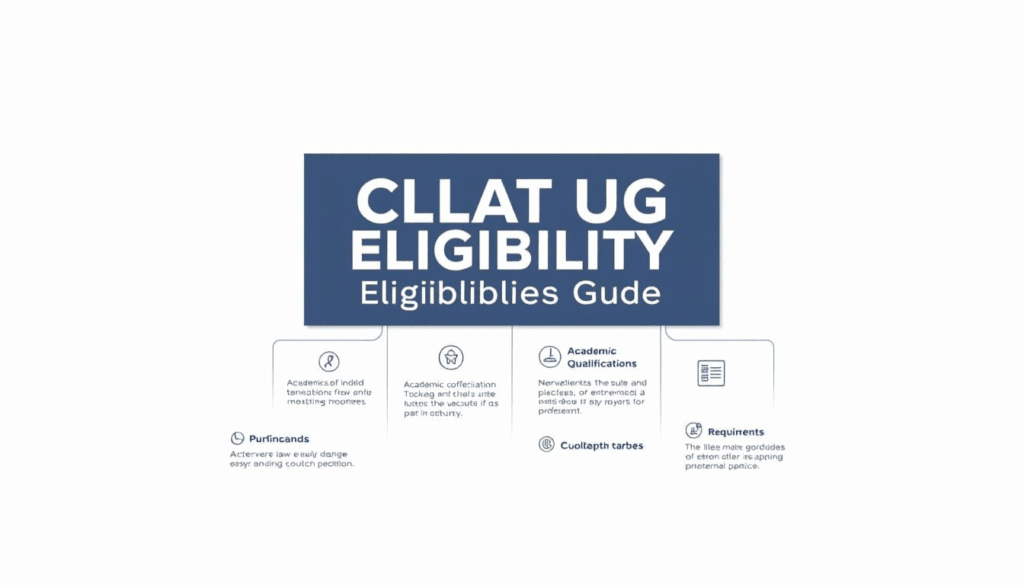CLAT 2026 isn’t just about what you know; it’s about how well you read, think, and apply. The case-based pattern can seem tough at first, especially when you’re staring at long passages and tricky options. But with the right approach, it gets easier, even enjoyable. Active reading is at the core of doing well, particularly for passage-based questions that test your ability to grasp tone, intent, and inference. This guide breaks down clear, practical strategies to help you read smarter, not harder. Whether you’re just getting started or want to sharpen your reading game, these tips are here to help you feel more prepared and more confident. For more insights on reading techniques, check out this blog.
Understanding the CLAT 2026 Case-Based Pattern
The CLAT 2026 case-based pattern has introduced significant changes in how aspirants need to approach the exam. Understanding these changes is crucial for effective preparation.
Key Features of the New Pattern
The CLAT 2026 case-based pattern focuses heavily on comprehension and analytical skills over rote memorization. Passages are lengthier and options may seem subtler, demanding a deeper understanding.
-
Passage Length: Passages are now more extensive, requiring sustained focus.
-
Question Complexity: Options are designed to test nuanced understanding and inference.
-
Skill Emphasis: A shift towards analyzing intent, tone, and implication.
This new pattern demands that students cultivate strong reading and analytical skills. It’s less about recalling facts and more about applying knowledge in context. Understanding these features can help aspirants tailor their study approach effectively.
Why This Change Matters for Aspirants
The shift in the CLAT pattern is significant because it aligns more closely with real-world legal skills. Understanding legal texts and making informed decisions is a lawyer’s daily task.
-
Preparation: Requires adaptation in study methods focusing on reading and comprehension.
-
Career Relevance: Prepares students for the actual demands of a legal career.
-
Competitive Edge: Those who master this pattern will find themselves better positioned for success.
This change encourages aspirants to develop skills that will benefit them beyond the exam, making it an essential part of their preparation strategy.
Mastering Active Reading for CLAT
Active reading is crucial for effectively navigating the CLAT 2026 pattern. It helps students interact more deeply with texts, which boosts their understanding and memory.
Importance of Active Reading Techniques
Active reading goes beyond just seeing words; it means fully engaging with the text to grasp and interpret its meaning. This method is especially crucial for passage-based questions.
-
Engagement: Actively engage with the text by questioning its content and predicting what comes next.
-
Understanding: This method aids in getting a better grasp of complex ideas and arguments, making it easier to understand the material.
-
Retention: Strengthens memory by connecting new information to what you already know.
Practicing active reading allows aspirants to become more adept at tackling the complex questions typical of the CLAT exam. It encourages critical thinking and deeper analysis, ultimately improving their ability to interpret and apply information in the exam context.
Tips for Effective Reading Practice
To refine active reading skills, aspirants should incorporate specific techniques into their preparation routine.
-
Preview the Passage Thoroughly: Begin by skimming the passage to identify its central theme and structure. Look for headings, subheadings, and any highlighted keywords or phrases that provide clues to the main arguments or narrative.
-
Annotate Meticulously: As you read through the passage, make detailed notes in the margins or in a separate notebook. Highlight key points, underline important arguments, and circle unfamiliar terms or phrases for further research. Use symbols or shorthand to quickly mark sections that require further review or deeper analysis.
-
Summarize Thoughtfully: Once you have completed reading, take the time to summarize the passage in your own words. Write a concise yet comprehensive summary that encapsulates the key arguments, ideas, and data presented. Ensure that the summary reflects the passage’s intent and nuance accurately.
-
Question Critically: Engage deeply with the text by posing questions about its content, purpose, and implications. Consider why the author has taken a particular stance, what assumptions underlie their arguments, and what evidence supports their conclusions. Challenge yourself to identify any biases or gaps in the logic.
-
Reflect Contextually: Think critically about how the passage connects to broader themes or the overarching subject area. Reflect on its relevance to current events, historical contexts, or theoretical frameworks. Consider how the passage informs or challenges your understanding of the topic at hand.
Engaging in these detailed practices can significantly elevate your reading comprehension skills, equipping you to adeptly navigate the complexities of the exam and handle its rigorous demands.
Strategies to Read Between the Lines
Reading between the lines is essential in tackling passage-based questions. It involves understanding implied meanings and drawing conclusions beyond the explicit text.
Figuring Out Passage-Based Questions
Passage-based questions often require you to infer and analyze information that isn’t directly stated, challenging you to engage with texts on a deeper level. Mastering this skill is crucial for success in the CLAT 2026 case-based pattern, where nuanced comprehension can be the difference between average and outstanding performance.
-
Inferences: Develop the capacity to draw logical conclusions from the text, discerning implicit ideas and themes supported by textual evidence. This involves identifying underlying messages and connecting disparate pieces of information cohesively.
-
Tone and Intent: Accurately determine the author’s tone—whether it is critical, sarcastic, neutral, or enthusiastic—and their intent behind crafting the passage. This entails understanding nuances in language and recognizing the emotional and rhetorical objectives the author strives for.
-
Contextual Clues: Leverage contextual clues to decode meanings and unravel complex concepts. Scrutinize the surrounding text and background information to fill gaps in understanding, allowing you to appreciate the subtler points that might not be overtly stated.
By meticulously honing these skills, students can navigate the complexities and nuances inherent in passage-based questions with greater precision and confidence.
Enhancing Comprehension Skills
Improving comprehension skills involves consistent practice and strategic reading. Here are some in-depth steps to enhance these skills:
-
Read Widely and Variedly: Engage with a wide range of texts, encompassing genres like legal journals, opinion pieces, fiction, and news articles, to broaden your perspective and understanding of different writing styles and complexities.
-
Practice Regularly with Intention: Dedicate specific daily time slots for reading practice, focusing on diverse material. Set objectives for each session, such as identifying themes, analyzing arguments, or summarizing content, to make your practice sessions more purposeful.
-
Engage in Active Discussions: Regularly discuss passages with peers or mentors to gain diverse insights and viewpoints. This collaborative approach can help you understand multiple interpretations and improve your critical thinking skills by arguing different perspectives.
-
Reflect and Review Thoughtfully: Actively reflect on and review the material you have read to embed understanding. Create mind maps or summaries to visualize connections and insights, which aids in retention and recall during exams.
-
Use Analytical Tools: Incorporate techniques such as underlining, annotation, and question framing while reading to dissect complex texts. Employ critical thinking questions that challenge you to identify assumptions, discern biases, and critically evaluate the strength of the arguments presented.
By incorporating these comprehensive practices into your routine, you can significantly bolster your comprehension abilities, positioning yourself to perform effectively in the CLAT exam context.
Building a Confident CLAT Strategy
A successful CLAT strategy involves more than just studying hard; it requires a well-structured approach to preparation.
Developing a Personalized Study Plan
Creating a personalized study plan can provide structure and focus to your preparation efforts.
-
Assess Strengths and Weaknesses: Identify areas needing improvement.
-
Set Goals: Define clear, achievable goals for each study session.
-
Schedule: Allocate specific time slots for different subjects.
A well-crafted study plan can help aspirants manage their preparation effectively and efficiently. For more on crafting a CLAT strategy, refer to this guide.
Managing Time During the Exam
Time management during the exam is crucial for ensuring you can answer all questions. Here are some tips:
-
Practice Timed Tests: Simulate exam conditions in practice sessions.
-
Prioritize Questions: Tackle easier questions first to secure quick marks.
-
Monitor Time: Keep an eye on the clock to avoid spending too long on any question.
Effective time management can significantly impact your performance on the day of the exam.
Start Practicing for CLAT 2026 Success
Practicing these strategies regularly can make a significant difference in your preparation.
Incorporate Techniques in Daily Routine
Integrating the techniques discussed into your daily routine can enhance your preparation journey, offering a structured and sustained approach to mastering the required skills.
-
Daily Reading Practices: Set aside specific times each day dedicated to intensively reading varied and complex passages. Annotate meticulously as you progress, noting central themes and key arguments. This practice will gradually build your comprehension and analytical skills, essential for excelling in the exam.
-
Reflect and review in-depth: Make it a habit to systematically revisit particularly challenging passages on a regular basis. Focus on identifying patterns in your mistakes and understand underlying concepts that eluded you initially. This reflection not only tracks improvement but also reinforces learning by addressing areas of difficulty head-on.
-
Engage in Peer Discussions: Actively participate in discussions with peers, mentors, or study groups. Such interactions can provide diverse perspectives that deepen understanding and stimulate new insights. Debating interpretations and analyses with others can strengthen your critical thinking and ability to argue effectively.
Consistent practice and the incorporation of these comprehensive techniques can lead to continuous improvement and heightened readiness for the CLAT exam. To explore more strategies and insights into tackling passage-based questions, check out this blog on passage-based questions.
Connect with Lawgic for Expert Guidance
For top-tier assistance, reach out to Lawgic, renowned for its affordable and all-encompassing CLAT preparation courses. Benefit from expert tutors who can customize your study plan to meet your specific requirements.
-
Personalized Coaching: Receive individualized guidance from seasoned tutors.
-
Comprehensive Materials: Gain access to extensive and varied study resources.
-
Supportive Environment: Experience encouragement and assistance at every stage of your preparation.
Discover more by visiting Lawgic’s website.
Conclusion
In conclusion, mastering the CLAT 2026 case-based pattern requires a thoughtful approach centered on active reading and strategic preparation. Through consistent practice and expert guidance, aspirants can build confidence and skill, paving the way for success.
FAQ’s
Q: What is the CLAT 2026 case-based pattern?
A: It emphasizes comprehension and analytical skills through longer passages and complex questions.
Q: How important is active reading for CLAT preparation?
A: Active reading is essential for understanding and interpreting the dense material typical of the CLAT exam.
Q: What strategies can help in reading between the lines?
A: Focus on inference, understanding tone, and using contextual clues to grasp implied meanings.
Q: How can I manage time effectively during the CLAT exam?
A: Practice timed tests, prioritize questions, and keep track of time to ensure a balanced approach.
For more insights on preparation, explore Lawgic’s coaching and additional reading comprehension techniques.


